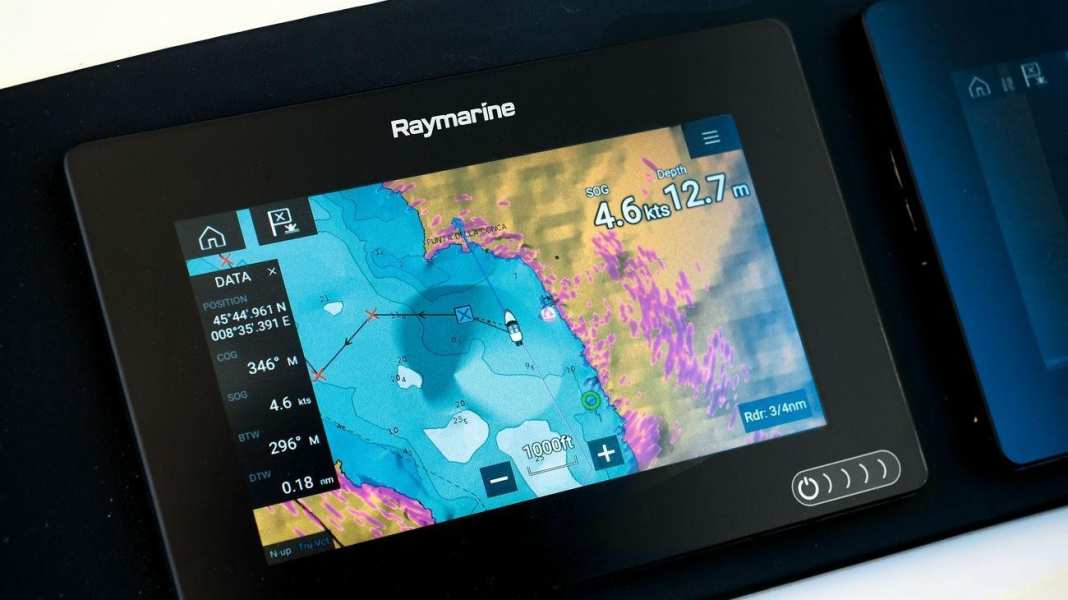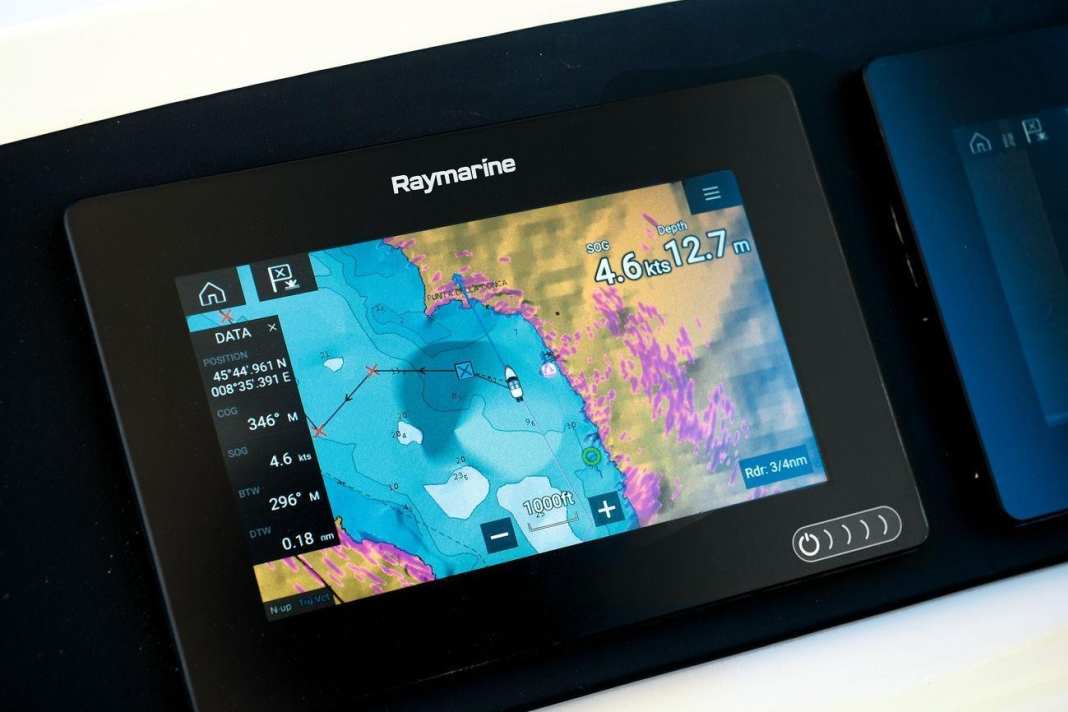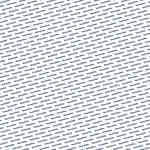
Northern Italy in spring. The sun and sky over Lake Maggiore create the illusion of summer - at least from the sheltered driving position of the test boat. Outside, an icy northerly sweeps across the lake at almost 20 knots.
At least that's what the Axiom plotter's wind display tells us, which appears as a data field on the chart at the swipe of a finger. Swiping and pressing are the main activities over the next few hours, because you won't find any buttons on Raymarine's latest generation of plotters. Instead, the sheer glass front responds spontaneously to finger movements.






The touchscreen used is in no way inferior to that of high-quality tablets and is easy to read even in sunlight. The rest of the hardware is also very reminiscent of mobile devices. Like the basis of the new Lighthouse III software, the quad-core processor also comes from the booming tablet and smartphone segment, which saves development costs.
Instructions almost unnecessary
The intuitive operation of the plotter is striking. Even for inexperienced Raymarine users, instructions are only required for a one-off configuration, with prepared profiles for various applications relieving the skipper of a large part of the setup work in advance - that is customer-friendly.
The easy-to-assign icons and the very clear and flat menu structure are sufficient for everyday operation. The live preview is particularly helpful when setting the radar or fishfinder. The menu is displayed next to the live image so that you can immediately see what effects the changed parameters have on the displays.
The fact that the four processor cores are not just good for marketing is demonstrated by the very smooth zooming of the maps and when switching from one function to the next. The individual applications such as radar, map view, fishfinder or instrument display do not have to be restarted and closed each time, but continue to run in the background and are available again in a flash if required.
The Axiom series is intended to replace the previous A series in the medium term, and the devices could then function as entry-level models. However, they actually offer the same range of functions as the higher-end E or ES displays, but lack buttons and a joystick. In some cases, the Axiom series is currently even superior to its predecessor models, as the new Lighthouse III software is not yet available for the older models. This will follow in the course of the next few months.
Night vision with collision alarm
Alongside the new plotter series, Raymarine is presenting the M100 and M200 thermal imaging cameras. Previously, more than 10,000 euros had to be invested in this type of technology. The new M100 camera, on the other hand, is available for just under 3000 euros, which is roughly equivalent to the cost of a radar antenna.
The advantage of a thermal imaging camera becomes apparent in the dark. Even in complete darkness, the technology still provides a clear image and also clearly shows small objects such as anchor buoys and seagulls floating on the water. This increases safety enormously when travelling at night and also makes targets visible that the radar cannot detect.
The resolution of 320 x 240 pixels, which appears low at first glance, is completely sufficient in practice. When it comes to locating and recognising objects such as barrels, finer details are generally not necessary. As different materials have different radiation behaviour even at the same temperature, even pieces of wood floating in water can be reliably identified.
The M200 camera costing 4160 euros was installed on the test boat. In addition to height control, it also has a swivelling function. This becomes interesting when used in conjunction with the Axiom plotter, as it can easily track AIS or radar contacts, for example.
If the Clear Cruise function is activated, the camera automatically scans a previously defined sector and automatically marks all objects on or in the water. If a collision is imminent, an acoustic alarm is also triggered. However, a video window for the thermal image must be open on the plotter; unfortunately, the collision alarm does not work in the background.
The fishfinder qualities of the Axiom series are impressive. The new technology, called RealVision, provides a fine, quasi-three-dimensional representation of the seabed. This not only allows you to detect fish, bottom structures and wrecks, but also to determine their positions relative to the ship. However, the technology cannot look ahead.
Axiom is available with a 7-, 9- and 12-inch screen diagonal and costs from 890 euros in specialised shops. In addition to Ethernet for radar, video and thermal imaging, an NMEA 2000 interface is also available. Older NMEA 0183 devices can be connected via an optional adapter.
The plotters also have Bluetooth, Wi-Fi and GPS/Glonass/Beidou receivers. Map data from Navionics, Raymarine Lighthouse and raster maps from NV and Delius Klasing are currently supported, with C-Map to follow shortly.

